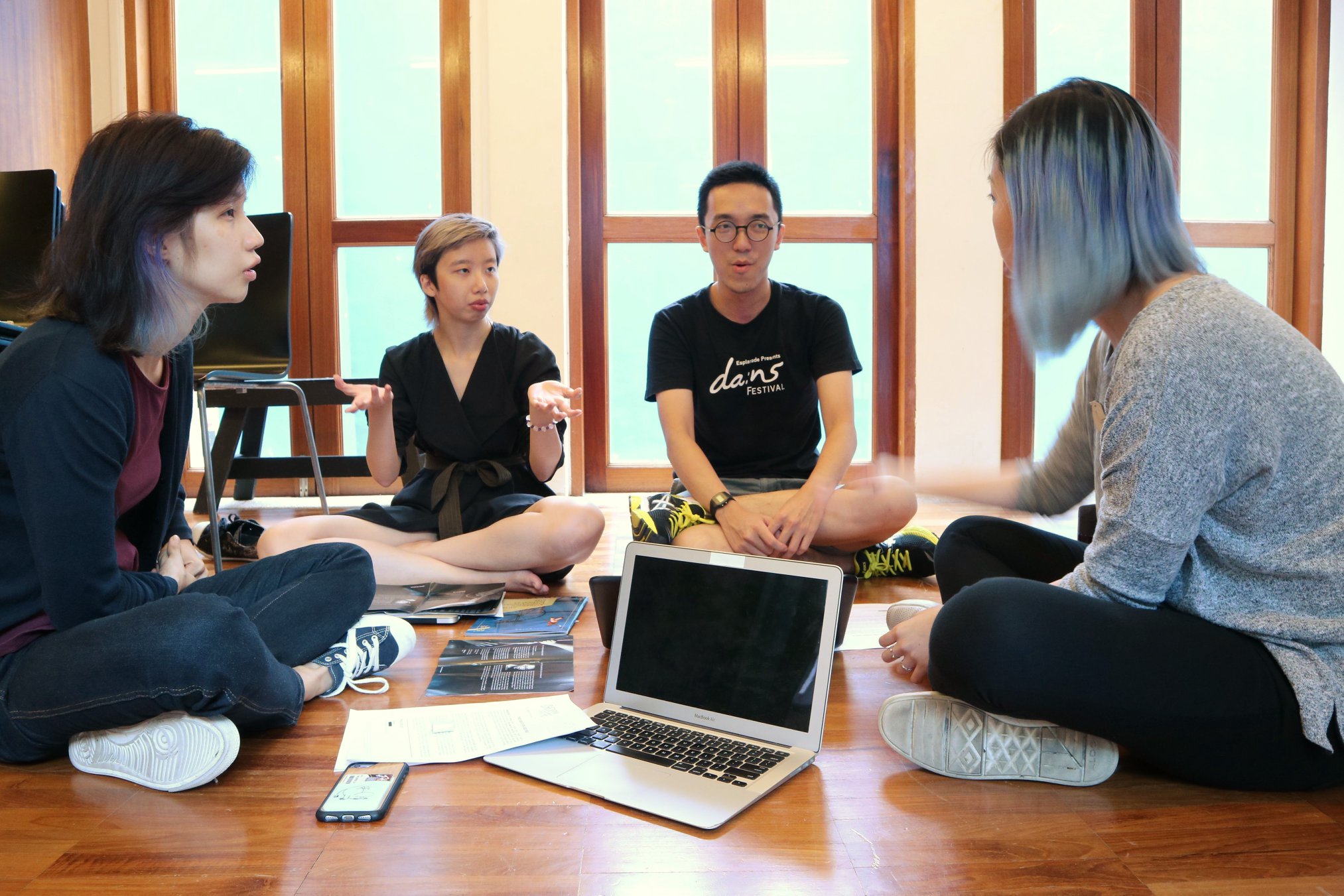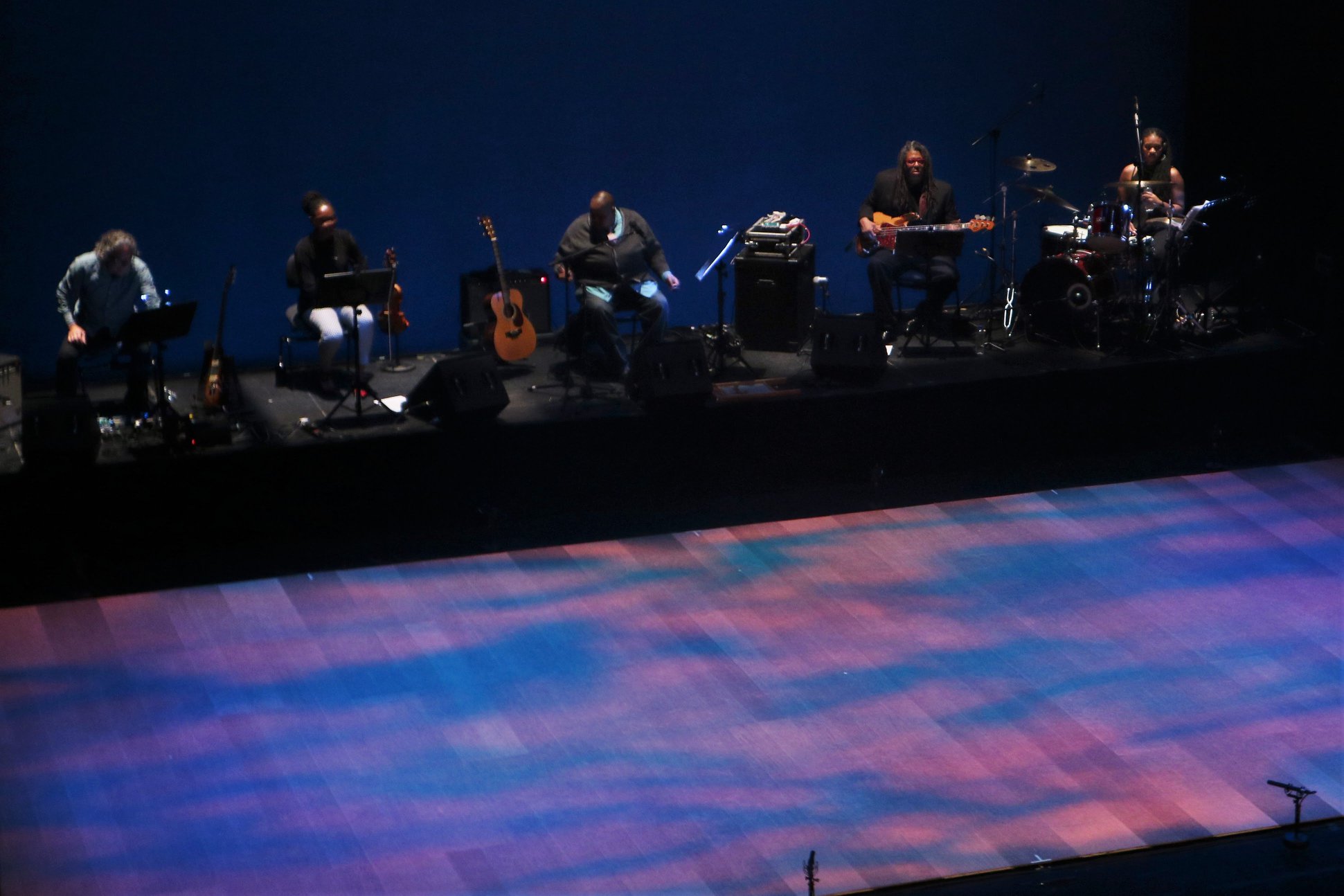Arts writer/editor Corrie Tan asked Performance Writing participants to try their hand at creating a press kit in today's workshop.

Day 5 Activities:
- P/W Workshop 4
- SIFA Performance: The Blues Project
On the first day of the POV programme, Lim How Ngean emphasised the fact that this track is titled “Performance Writing” - as opposed to “Performance Reviewing” - because the intention is to explore other kinds of writing, too. Participants got their first taste of that at the workshop on Day 3, when they began considering how to approach feature writing. At that same session, having just attended In Conversation with Michelle Dorrance earlier on in the day, participants also had a discussion about the art of pre- and post-show moderation.
Today’s workshop session delves further into this. It was led by guest facilitator Corrie Tan, and one of the exercises she set the participants was for them to put themselves into the shoes of a moderator who has to do a pre-show artist talk. It’s a chance for them to put into practice what they had previously discussed. Group 1 (Amanda Leong, Akanksha Raja, Alfonse Chiu, Loh An Lin, and Teo Xiao Ting) were tasked to come up with questions for Tobias Veit (executive director of Berlin’s Schaubühne), and Group 2 (Jaclyn Chong, Ke Weiliang, Lim Si Qi, Casidhe Ng, and Valerie Lim) had to do the same for Thomas Ostermeier (artistic director of Schaubühne).
It’s a practical challenge, as participants will indeed be attending artist talks with both directors, who are in town for their production of An Enemy of the People as part of SIFA, in the coming days. Tan’s hope is that they will really be able to put some of the questions they come up with to the artists.
After some brainstorming, Group 1 decided that they would like to focus on addressing the wider context of the work with questions like "What does it mean to create a work like Enemy in the context of Berlin?", and "What has it been like to bring Enemy on tour, and what are some of the audience responses to this 'canonical' work?".
Group 2's questions, meanwhile, included: "You have directed six of Ibsen's plays over the years - why?", and "You have referred to yourself as a 'traditionalist' in previous interviews - what do you mean by that (since you're known for adapting classical plays)?"
Tan went through each group's ideas and gave a series of practical advice, including the importance of over-preparing questions in case interviewees don't open up much; how basic information about a work should be framed as context rather than questions; and how it’s often advisable for moderators to send a list of talking points to the artist beforehand.
"It works against a more journalist [approach, where you put someone on the spot],” says Tan. “But if you want everyone [in the audience] to have a good experience, then sometimes you do prep the person you're talking to, so they're not caught off-guard for certain questions."
The participants found this to be a fruitful exercise, as moderation as an art form is rarely considered in depth.
“I am so glad that Corrie put us through this exercise, because it made me realise how much the art of pre/post-show moderation is taken for granted,” Ke reflected after the workshop.
“It was a good opportunity to work in groups for this exercise because some group members had experience moderating such conversations, so they shared their approaches,” added Raja.

It was all about group work in today's workshop!
The other form of writing that Tan asked the participants to examine is the press kit, which she refers to as “inverse of feature article” because it serves to provide features writers with the information they need. She first went through an example of one by Checkpoint Theatre (used with permission from the company), and invited participants to share points that they found interesting. They were then split into three groups and asked to come up with points that they would include in a press release about 0600, which they watched last Saturday.
By and large, all three groups came up with similar points to highlight, such as the fact that it's a SIFA festival commission, that it's by a new collective (Ground Z-0); that it's a site-specific/experiential work; and include a quote by the work's creator. Tan agreed with these, but also pointed out that they must also remember to explain what the work is about - in this case, the death penalty - because it's easy to forget to mention the basics. One thing that most participants struggled with was to be objective in their writing, as they had already watched the show and were used to approaching performances from the point of view of a reviewer.
“It’s a world of a difference from what we’ve been working on the past few days, which involved a lot of analysis and deconstruction and attention to the nuances of a work,” reflects Raja. “Criticism is about unpacking a production after it is staged; today’s session was about how to package a production long before it opens.”
“What I found most interesting about the press kit session was when Corrie and Gwen [Pew from Centre 42] mentioned that the marketeer's intention is to pique the interest of the journalist so they are compelled to fill in the gaps created through personal interviews with the artist,” said Ng at the end of the session. “[Centre 42’s company manager Ma] Yanling also mentioned the principle of ‘staying true to the artist's vision’ in description and writing, zooming into elements that the artist will definitely examine, so there isn't a discrepancy in how the work is portrayed.”

After attending a talk with American tap dancer Michelle Dorrance, participants finally got to see her work, The Blues Project, tonight.
Post-workshop and post-dinner, the group then headed to Victoria Theatre for The Blues Project, which Dorrance co-created with Derick K. Grant, Toshi Reagon, and Dormeshia Sumbry-Edwards.
“I think after the talk with Michelle, I was definitely looking out for ways in which she was pushing the conventions of tap dancing. I was particularly intrigued by the sequence where they swapped out their tap shoes for soft sole shoes, and let the drums take centre-stage in music-making,” said Jaclyn Chong after the show. “We talked a lot about the musicality in tap dance, and so shifting my focus to just seeing them dance, without hearing them as distinctly, made me realise that there is still a physical form to tap dancing in which the musicality could be recognised in their movements.”
Tan will be bringing discussions back to critical writing in tomorrow's seminar, but today's session hopefully gave them a sneak peek into what other forms arts writing can take.
Published: 9 May 2018